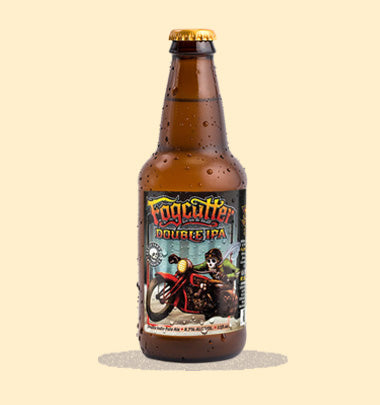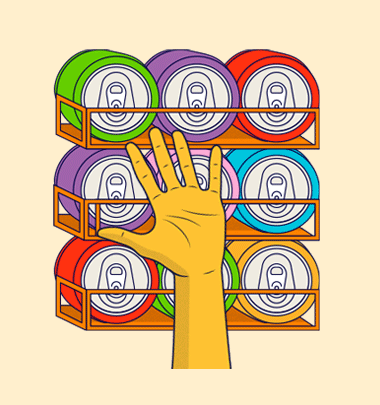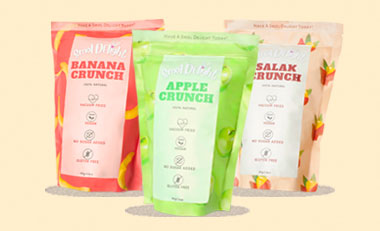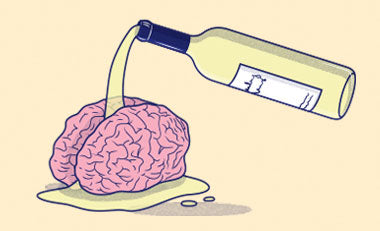 Image credit: @enginakyurt
Image credit: @enginakyurt
Beer is bubbly - that’s no secret. Carbonation occurs naturally during fermentation which gives your beer that crisp and exciting effervescence. So when the idea of adding nitrogen gas into beer surfaced, many thought that it was insane! I mean, nitrogen is a gas that is almost insoluble in liquid and it needs to be pressurised and kept very cold if you want to dissolve it, so how would that even work in beer? Well, let’s find out.
What is a Nitro beer?

Image credit: @4pinesbeer
So as you may have gassed, “nitro” refers to nitrogen gas that is added to a beer to give it an extra creamy element. A Nitro beer has a sweet sweet combination of 70% nitrogen and 30% carbon dioxide (CO2) to generate that perfectly smooth carbonation and a cascading effect that you won’t be able to experience in a normal CO2-reliant beer.
 Image adapted from: Firestone Walker Brewing Co
Image adapted from: Firestone Walker Brewing Co
What’s this cascading effect, you may ask? Well, it is when the nitrogen bubbles fall from the sides of the glass and shoot up through the middle, resulting in a fluffy white cloud of foam that rests snugly at the top.
The History of Nitrogen in beer

Image credit: Guinness
The first recorded history of Nitro beer began with Guinness back in 1959, with its nitrogen-infused dry Irish stout, the Guinness Draught. Figuring out how to bottle the iconic Irish stout was the greatest obstacle, as it was so difficult to guarantee that same phenomenal nitro experience one would have at a pub.
After 20 years of hard work, the brewery created what they called a “creamer” - a take-home device that injected nitrogen into the beer. Unfortunately, the creamer had its flaws; it was rather troublesome to use. With that, Guinness continued working to improve the device and after years of trial, they developed the “widget” and released it in 1988.

Image credit: Guinness
The widget is a nitrogen-filled capsule that gases up the stout the moment the can is opened. This inventive masterpiece roused the internet and even won the Queen’s Award for Technological Achievement in 1991.
As the years went by, the popularity of Nitro beer bubbled up. In 2014, Left Hand Brewing launched a Nitro Fest, inviting breweries from all over the country to pour Nitro beers alongside circus shows. Soon after, many breweries caught the nitro wave and created delectable Nitro brews of their own.
The Science behind Nitro beer

Image credit: Crystal Kwok
With a gas that refuses to dissolve in liquids, how exactly is nitrogen added into beers? First, the process of adding nitrogen gas to a beer is called nitrogenation. You can nitrogenate your beer by adding nitrogen gas from gas cylinders or by using a nitrogen generator. Small breweries often use a pressure tank to infuse nitrogen into the beer - otherwise it won’t dissolve.
Nitro stouts work well under pressure - a pressure of 7 psi above atmospheric to be exact. This will enable 40 parts per million of nitrogen to remain in the brew, which is just enough to give us that creamy nitro texture.
I guess you could say that nitrogenation is a rather forceful process!
The perfect pour: Nitro beer edition

Image adapted from: Guinness
Nitro beers are hardcore; so when you crack open a can of Nitro, be sure to do a hard pour, and do it the right way. What’s a hard pour? Well, it is when you pour a beer at a 180° angle. When you do the hard pour, remember to use the right glassware - a tulip glass - and enjoy the mesmerising cascading effect.
If you’re wondering why Nitro beers need to be poured this way, it is because doing so will activate the nitrogen and give your beer that creamy, smooth texture. So be sure to do it right, or you will end up with a wasted potential of a phenomenal brew!


















